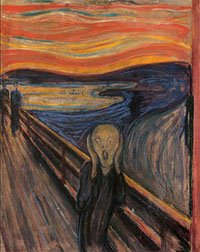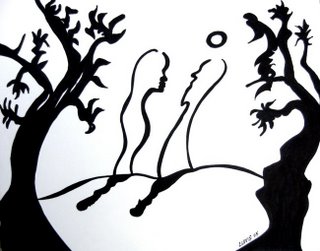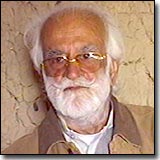Media, Muslims and me!

Something had to give. It had to happen sometime. Three explosions ripped through the communally sensitive town of Malegaon in Maharashtra killing 37 and injuring more than 100. The explosions occurred in a mosque, a marketplace and a residential area. The targets were quite clearly Muslims.
The most common interpretation in the media is that the latest round of terrorist strikes is “revenge” for the Varanasi temple attack and the Mumbai serial terror strikes. Though no leads have been found yet it has been widely assumed that the perpetrators are Hindu fundamentalists, who are paying back the Muslim fundoo’s in the same coin. This is their “revenge” for Varanasi and Mumbai.
And so the downward spiral of violence gets a new lease on life. Media reports say the town is “tense”. Rioting mobs went on a rampage, incensed by the attack on their place of worship. Security forces have been rushed to Malgaon and curfew has been declared. Government officials have appealed for calm. We know all this from the media. But what goes unreported?
These are disquieting times we live in. An international war on terror is met with an equally fierce jihad against the kafir. Reams of newsprint and miles of footage document this clash of civilizations every single day in different parts of the world: Iraq, Lebanon, Kashmir, Palestine, and Chechnya. Meanwhile an idiot who can’t string two sentences together leads the “coalition of the killing” against a bearded fanatic who preaches terror from a shadowy cave somewhere in Pakistan. The international media outlets, depending on their political predilections, get into the act. Beyond the slogans of “We report, you decide”, “Free and fair” or even “Free and Fearless” we are fed a diet of biased reports and opinionated arguments. I saw the CNN documentary “In Bin-Laden’s Footsteps” the other day on IBN. It was slick, glossy, gripping…and completely missed the point. Christiane Amanpour narrated how Bin-Laden became the leader of an international terror franchise. But, it didn’t address several important issues:
Why have certain streams in Islam turned so virulently against the west, America in particular?
Has US foreign policy contributed to the rage in the “Arab Street”?
What can be done to address the issue?
But why would they? They are a mainstream American media outlet after all.
Here is the media image of Muslims: bearded, skull-cap wearing fanatics who preach hatred for non-believers and love for Allah who are out to get all of us. It is a seductive image. When one sees a Muslim with a beard and skull-cap dressed in a traditional sherwani it is difficult not to think of mad mullahs.
When my mind inadvertently strays to this image I think of the Muslims I have known; I think of Karimullah, a police constable in rural Guntur who fights Naxalites and risks his life everyday, I think of Basha, a stringer in a small town in Guntur who scrapes a living working for a progressive newspaper. My neighbour Feroz who works in Lucknow for a pittance and dearly misses his wife and daughter in faraway Faizabad. Mahboob, whom I met at a documentary film festival, was dying to make a docu on social issues. Sheik Mastan, the guy who painted my house and whom I rather heartlessly once asked, during the course of an India-Pakistan cricket match, “Which country do you support?” His stoic reply, “India, sir”. Naheed Aqeel, an activist in Lucknow who doesn’t wear a burqa, but wears her feminist convictions quite openly on her sleeve, Qurratulain, my friend in Hyderabad who smokes, drinks and does other un-islamic things. Firoz, another friend who wears his hair long, loves Black Sabbath, Led Zeppelin and Salman Rushdie. Kismat, who is involved in the gay-rights movement and is a safe sex evangelist.
I think of these people and feel reassured that all is not lost, yet.



